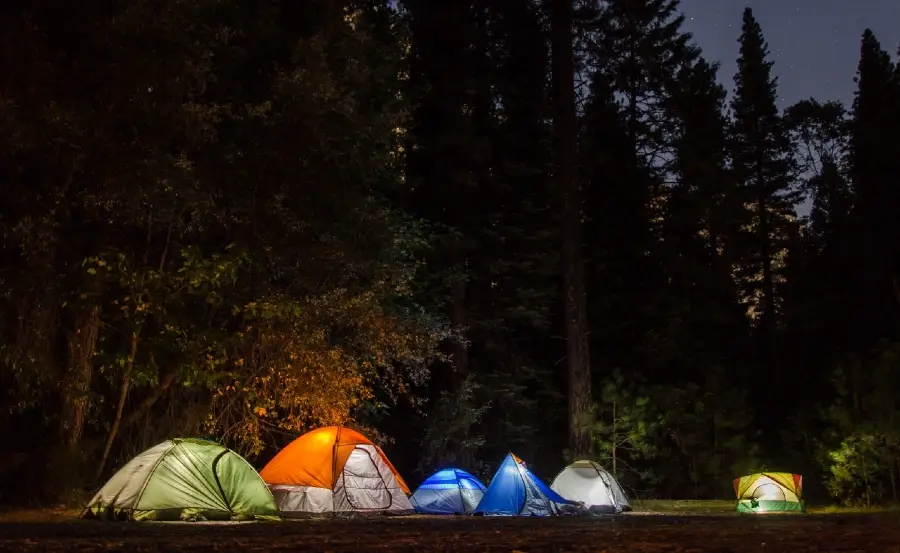Are you planning your next camping trip and wondering if you should buy a swag or a tent? Both have their pros and cons, but ultimately it comes down to what will work best for you as everyone will have different needs. We’ll help you decide which is best for you by breaking down the key differences and their pros and cons. If this first camping trip in Western Australia check out 10 things you should know before camping in WA.
Let’s start with the basics.
What is a swag and what is a tent?
Both swags and tents are types of shelters that are often used for camping. A swag is a small compact shelter designed for sleeping in. Swags are typically made from canvas or other sturdy materials, and they can be either single or double-size. Tents, on the other hand, are a large shelter with multiple compartments. They’re typically made from lighter materials such as nylon or polyester. They also require poles and other equipment for set-up, which can be a bit more complicated than swags.
What are the key differences between a swag and a tent?
The key differences between the two are:
- Swags are typically smaller and more compact than tents, making them easier to carry and transport.
- Tents are generally more expensive than swags.
- Swags are usually only big enough to sleep one or two people, while tents can accommodate four or more people.
- Swags tend to be more popular in Australia, while tents are more popular in other parts of the world.
- Tents are larger and more complex to set up than swags.

Pros of using a swag instead of a tent
- One key advantage of sleeping in a swag is that they are super easy to set up and take down as they have very few separate components. Some swags don’t even need poles and so require very little effort.
- You can pack away your swag with your mattress and sleeping bag left inside making it even easier to set up and pack away.
- The fast set-up makes swags perfect for road trips where you’re frequently sleeping in different places. It would be a nightmare to set up a large tent and pack it away at a different location each day. A swag can be set up and rolled away in minutes.
- Swags provide excellent ventilation, making them ideal for hot weather camping.
- Similarly, most swags are made with thick, heavy-duty canvas material which provides protection against cold weather.
- This heavy-duty material makes swags durable and long-lasting.
- Swags feature just one compartment making them cosy and keeping you warmer at night.
- Some traditional swags a super lightweight making them easy to carry and perfect for hiking trips.
- Swags are usually far cheaper than tents.
- Being lower to the ground, swags provide more protection in windy conditions.
Think a swag is the right set up for you? We’ve reviewed the best double swags and best single swags available in Australia for you.
Cons of using a swag
- Some swags, such as double swags, can be heavy and bulky.
- Swag mattresses can be thin and uncomfortable on hard ground.
- Swags lack any substantial room to store anything other than a mattress, sleeping bag, a few clothes and yourself.
- Some swags are very small and compact which may make you feel a little claustrophobic.
- Though traditional swags are lightweight, the more common dome swags can be bulky and heavy.
- There isn’t much room to comfortably sit and shelter from the elements during the day if necessary.

Pros of using a tent instead of a swag
- Tents are great for group camping as you can all sleep under the same roof.
- Tents are ideal for badass camping set-ups when staying for a while in one campground.
- Some tents are large enough to create a home away from home, with plenty of storage space, separate sleeping compartments and sometimes even a separate area to relax in if you get bad weather.
- Tents tend to be more comfortable than swags in general.
- Many offer enough head height room to stand up, making tasks like getting dressed easier.
- Tents come in a wide range of sizes, so you can find one that’s just right for your needs.
Cons of using a tent
- Tents are made from lightweight material which can easily tear.
- Certain tents can take a while to set up, especially if they are large with several different compartments and lots of poles.
- Tents are generally larger, bulkier, and heavier than swags.
- You have to remove everything from the tent before packing it away which can be time-consuming.
- Tents are not ideal for sleeping in different locations each night as they are more complex to set up and pack away.
- Large tents can get very cold during the night with more space and less opportunity to share body heat.
Swag vs Tent: Conclusion
There are many pros and cons for both swags and tents, so it must come down to your personal preference.
In summary, if you are looking for a quick place to sleep each night whilst on a road trip then a swag is probably for you. Alternatively, if you’re a large family looking to set up a base for a week then a tent will most likely better suit your needs.
Let us know your preferences and why you choose to camp in a swag or tent at hello@waadventurer.com!




Some great information I’d not thought about.
Glad we helped, Tom!
One big difference that I find is that swags are much better in windy conditions, particularly if you are camping in a place like on sand at the beach
Yes! So true.